If your outdoor area is on the small side, use that as an asset to create an inviting outdoor retreat. With a few strategic choices to expand views, hide storage and maximize vertical surfaces, you’ll get the most out of every inch of your yard. These gardens all offer smart space-saving solutions and prove that less is often more.
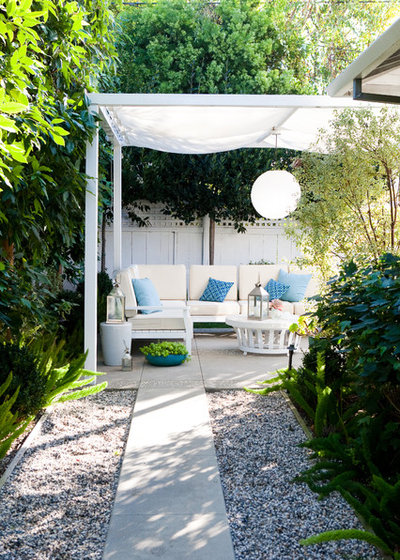
Molly Wood Garden Design
1. Use your side yard. This often-neglected area can be a real asset to a small garden. Use the narrow space to create a sense of arrival to an outdoor lounge and make the garden feel more spacious. To re-create the look here, position an outdoor seating or dining area in the corner of a small lot so that it is visible from the side yard.
10 Ways to Make the Most of Your Side Yard
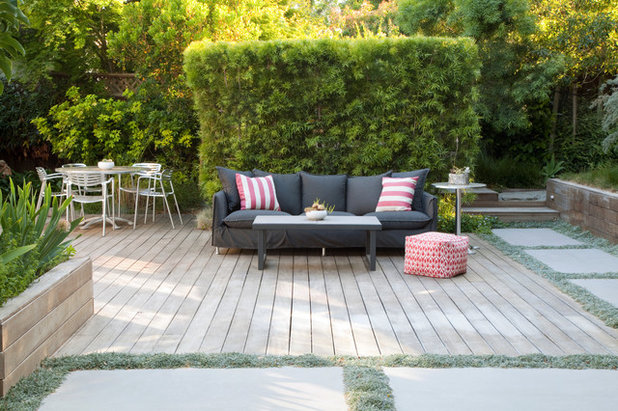
Growsgreen Landscape Design
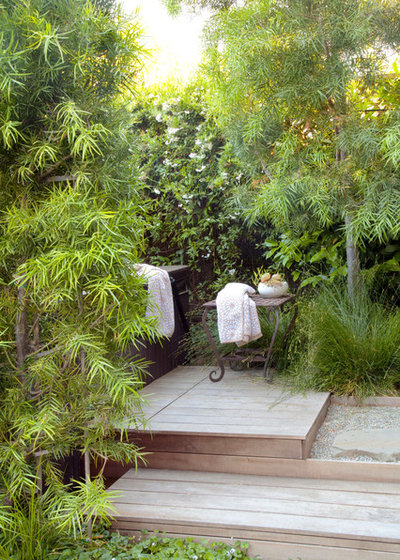
Growsgreen Landscape Design
2. Create a hidden element. Add an element of discovery, and a small garden will feel larger than what meets the eye. Hidden behind a clipped fern pine (
Podocarpus gracilior) hedge in this backyard, stairs to the right lead up to a secluded hot tub.
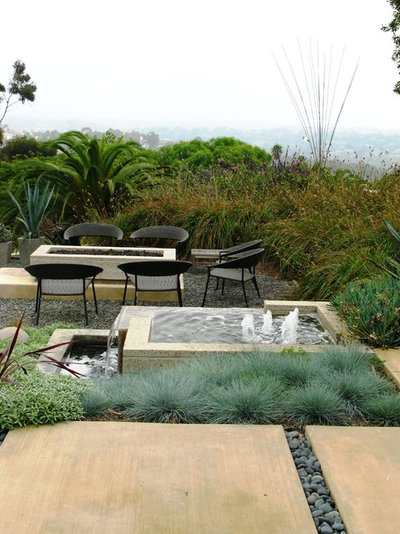
debora carl landscape design
3. Borrow views. Taking advantage of views — whether those of a city skyline or neighboring gardens — can offer big rewards in a small space. Here, the plantings have been kept to a minimum to keep the focus on the view. Low borders of ornamental grasses allow a visitor to look beyond the small gravel patio to palm trees and the San Diego skyline, blurring the lines of where the property ends.
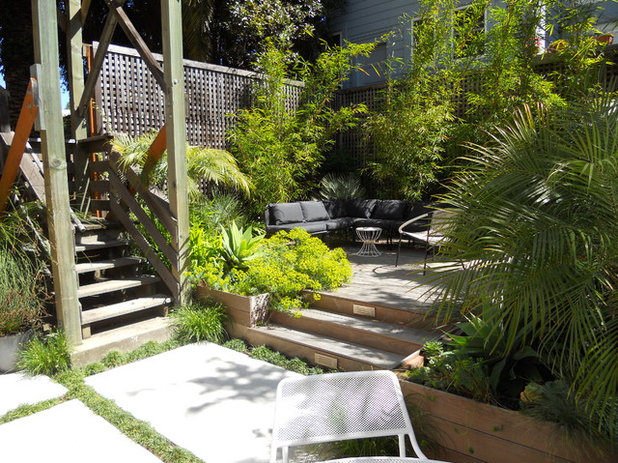
Growsgreen Landscape Design
4. Level up. Taking a few steps up to a platform gives the sense of a journey to a destination and can make two parts of a small garden feel like distinct areas.
See more of this transformed patio in San Francisco
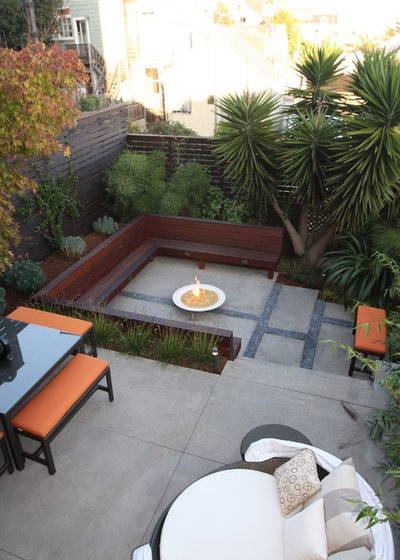
Outer space Landscape Architecture
5. Create multiple areas. Although it may feel counterintuitive, breaking up a small garden into defined-use spaces will actually make the area feel bigger. The designer of this urban garden made the most of its sloped lot by splitting the area into two distinct areas: one for outdoor dining and the other for relaxing by a fire pit. The built-in benches maximize seating, while the planting areas behind the benches provide room for vines and shrubs.
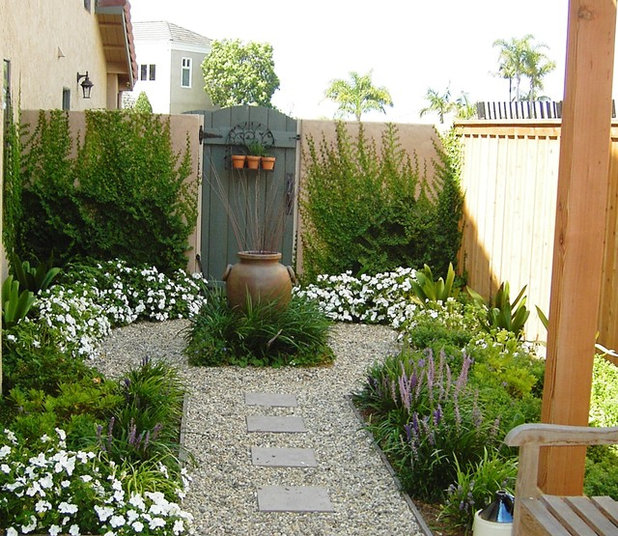
debora carl landscape design
6. Add a focal point. What would otherwise be a nondescript side yard becomes an inviting destination with the addition of a large Italian-style urn filled with branches, a trio of terra-cotta pots mounted to the garden gate and lushly planted borders. Offering multiple attractive areas for the eye to rest makes a space feel larger. When the plants die down in winter, the large terra-cotta pot will still provide a focal point and visually anchor the area.
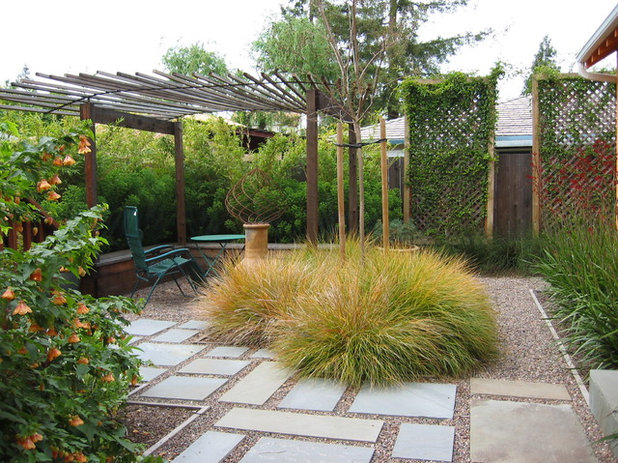
The Garden Route Company
7. Add a structure. Pergolas and arbors help define an area of the garden for a specific use, such as relaxing in the shade or enjoying a morning cup of coffee. In a small garden, adding a structure creates a different environment in a space that could otherwise feel monotonous. Here, a curved wooden arbor provides light shade and an attractive canopy for a small seating area.

ANNA CARIN Design
8. Build the biggest deck you can. Dinky platform decks feel cramped and can make a small space feel even smaller. Make the most of your plot with the largest deck or patio you can fit. To get a bit more green, leave space along the edges of the hardscape to plant vines to cover the fences, and add some big containers with lush foliage.
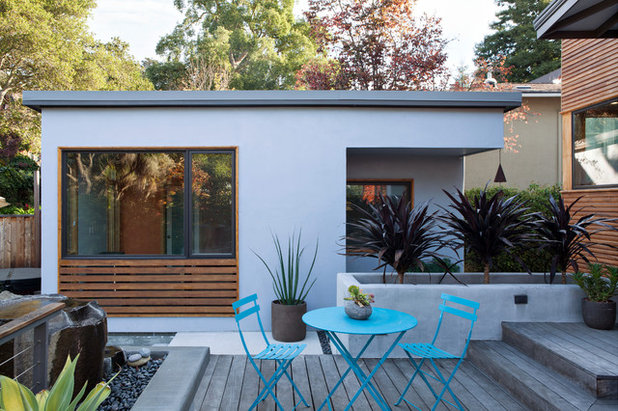
Ogawa Fisher Architects
9. Keep it clean. Simple lines and a tight color palette make a small space feel more spacious. Here, the horizontal lines of the house siding are echoed in the detached cottage’s window frame and decking. A color palette of gray, blue and mahogany across all materials helps make the space feel calm and uncluttered.
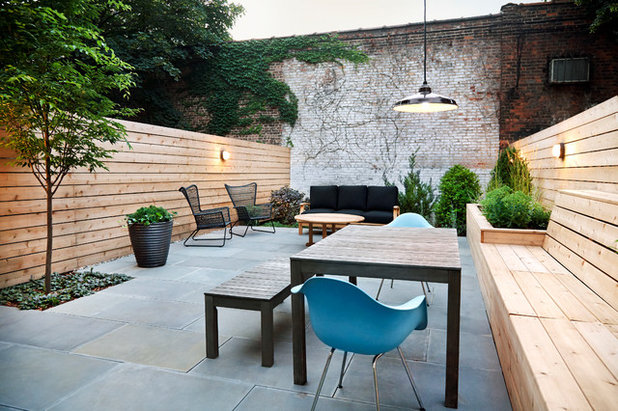
New Eco Landscapes
10. Have storage do double duty. These custom wooden benches provide plenty of seating for garden parties and room for storage with a clever hinged seat design.
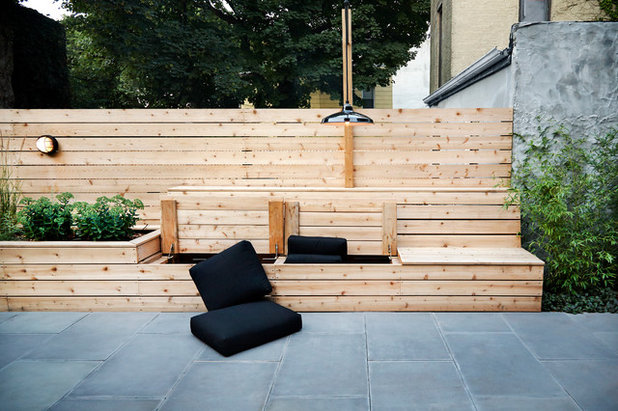
New Eco Landscapes
Outdoor cushions can be tucked inside under the bench seats.
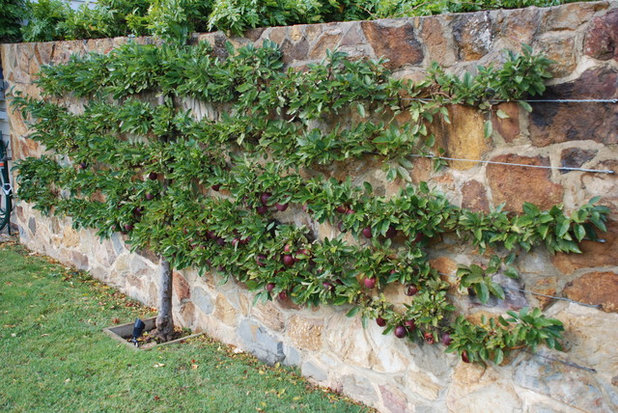
Andrew Renn
11. Maximize growing space. Vines, espaliers and containers are all your best space-savers when it comes to getting the most out of a limited area. If a small garden can’t accommodate a full-size fruit tree, take advantage of an otherwise wasted planting area to grow an espalier along a sunny wall.
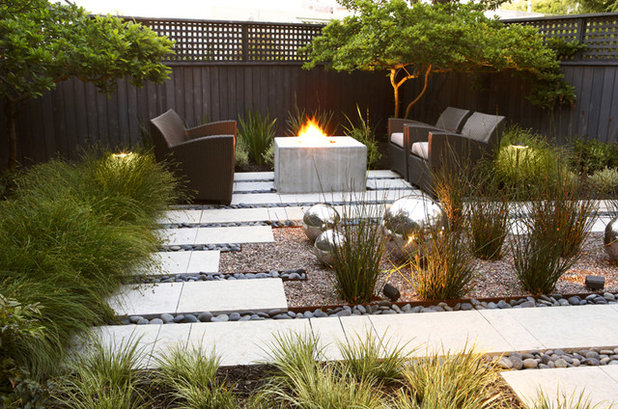
Arterra Landscape Architects
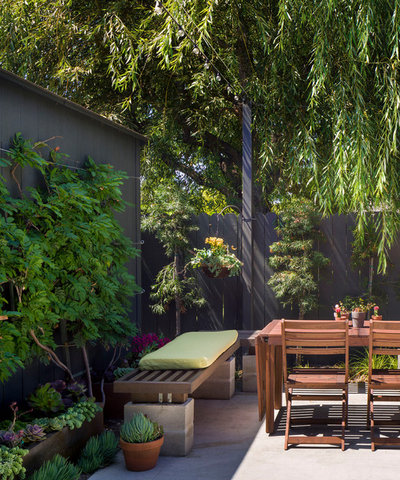
Oonagh Ryan Architects Inc
12. Go dark. Charcoal-colored walls and fences disappear and trick your eye into expanding the boundaries of a space.
In the previous photo, the dark fences seem to fall away, while the eye is drawn to the vivid green plantings and inviting flicker of the outdoor fire pit.
More: 10 Reasons to Use Black in Your Outside Space





